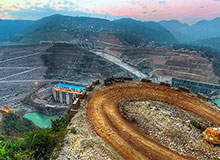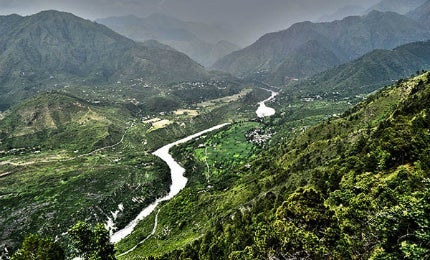

The Koldam Hydroelectric Power Plant, owned and operated by India’s biggest power utility National Thermal Power Corporation (NTPC), is located on the Satluj River in the Bilaspur District of Himachal Pradesh, India.
The foundation for the dam was laid in June 2000, with the main construction works starting in 2004. Impounding of the reservoir started in December 2013 and the 4x200MW (800MW) hydropower plant was fully-commissioned in June 2015.
Total investment in the project was Rs45.27bn (approximately $711m).
The first two units of the plant were commissioned in March 2015, followed by the third unit in April and the fourth unit in June, increasing NTPC’s total installed capacity to 44.79GW. It is expected that the power plant will generate approximately 3,054GWh of electricity a year.
Koldam hydroelectric power project details
The utility-scale plant has an installed capacity of 2MW and a power output of 1MW.
The project involved the construction of a 167m-high rock and gravel fill clay core dam with a crest length of 474m and a crest width of 14m. It also necessitated the construction of an upstream coffer dam with a maximum height of 73m, a crest length of 243.5m and a crest width of 14m, as well as a downstream coffer dam.
The dam’s chute-type spillway, located on the left bank, is equipped with six 17.1m-wide and 17m-high radial gates.
Featured on the surface powerhouse are four vertical Francis-type 200MW turbines, complemented by a 144m hydraulic head, a 100m-long open-type tailrace channel and a surface / conventional-type 400kV switchyard.
Ancillary project activities included the construction of an approach channel, two diversion tunnels and a pen stock.
Transmission system and beneficiaries of Koldam project
The output from the Koldam hydroelectric power plant is conveyed to the national grid via a 400kV direct current (D/C) line. Himachal Pradesh receives 12% of the generated power free of cost and 15% at bus-bar rate. The other north Indian states benefiting from the project include Delhi, Haryana, Punjab, Rajasthan, Uttar Pradesh, Jammu and Kashmir and Chandigarh.
Contractors involved with the North Indian hydropower plant
The joint venture of BHEL, Marubeni and Toshiba was contracted to supply, transport, install and commission the turbines, generators, transformers and associated machinery for the project, as well as render storage and material handling services.
Italian-Thai Development Public Company (ITD) executed the main civil works for the project. It subcontracted MCM Services, Right Tunnelling, KSR Infrastructures, Shiva Earth Movers, Sheetla Construction, Kuldeep Chand & Co., and Ashirwad Contractor to perform the earthworks.
The powerhouse construction and other associated civil work contracts were awarded to Gammon India, which was also responsible for the construction of the tail race channel, bay work and penstock. It further subcontracted the penstock and power house construction work to AMC projects and the penstock steel liner works to PES Engineers.
Gammon subcontracted the civil and excavation works for the power house, tailrace channel and roads to KSR Growth, who was also subcontracted by ITD to perform the excavation works for the spillway.
The de-silting arrangement for the project was performed by Afcons, whereas AMC Projects was subcontracted for the excavation and disposal of muck at the de-silting arrangement.
Continental Construction performed the excavation for civil and structural works for the two diversion tunnels, while Om Metals was contracted to supply the hydro-mechanical equipment for the vertical lift gates of the diversion tunnels and the radial crest gates of the spillway. MCM Services was subcontracted to construct the spillway, underground grouting and drainage galleries.
The transmission system was developed by Parbati Koldam Transmission Company, a joint venture of Reliance Infrastructure (74%) and Power Grid Corporation of India (26%), whereas the construction contract for the 400kV switchyard was awarded to Larsen & Toubro (L&T).
